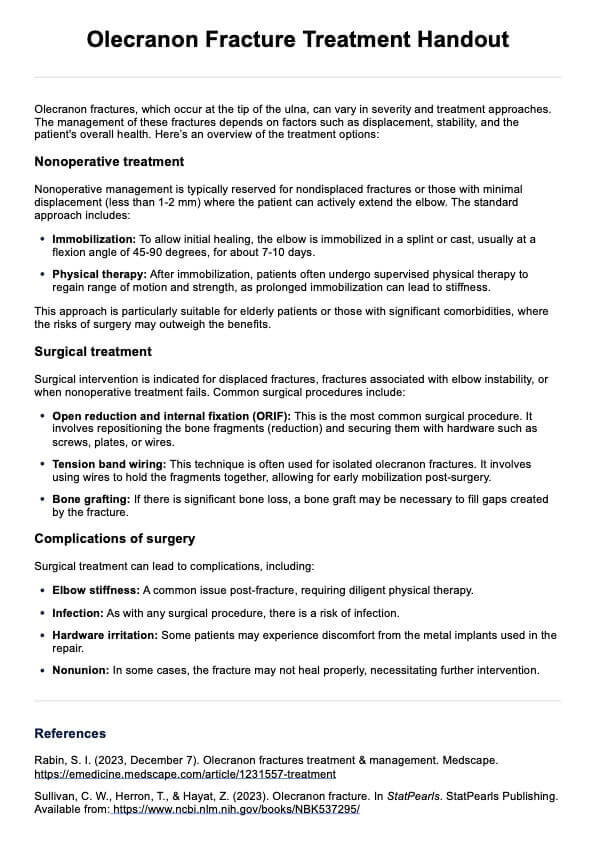An olecranon fracture typically heals within 6 to 8 weeks. Still, full recovery, including regaining strength and range of motion, may take several months, depending on the severity of the fracture and adherence to rehabilitation protocols.

Olecranon Fracture Treatment Handout
Discover effective treatments and management strategies for olecranon fractures, ensuring swift recovery and optimal elbow joint function.
Olecranon Fracture Treatment Handout Template
Commonly asked questions
If an olecranon fracture is left untreated, it can lead to complications such as persistent pain, decreased range of motion, elbow instability, and the potential development of arthritis or chronic joint dysfunction, making future treatment more challenging.
The best treatment for an olecranon fracture often involves surgery to realign and stabilize the bones, especially if the fracture is displaced. Non-surgical treatments like casting or splinting may be suitable for non-displaced fractures, accompanied by physical therapy to restore function and strength post-healing.
EHR and practice management software
Get started for free
*No credit card required
Free
$0/usd
Unlimited clients
Telehealth
1GB of storage
Client portal text
Automated billing and online payments











